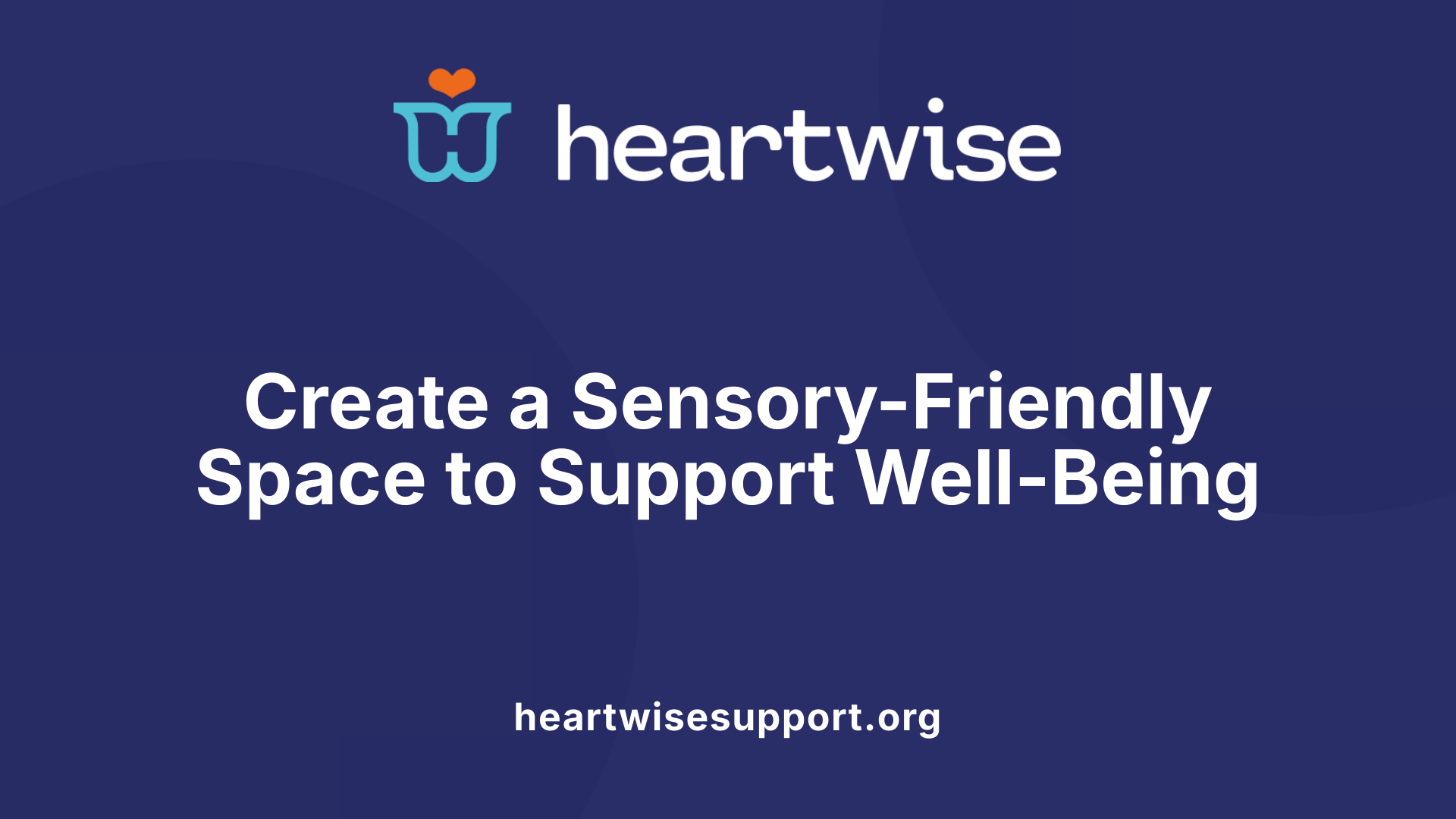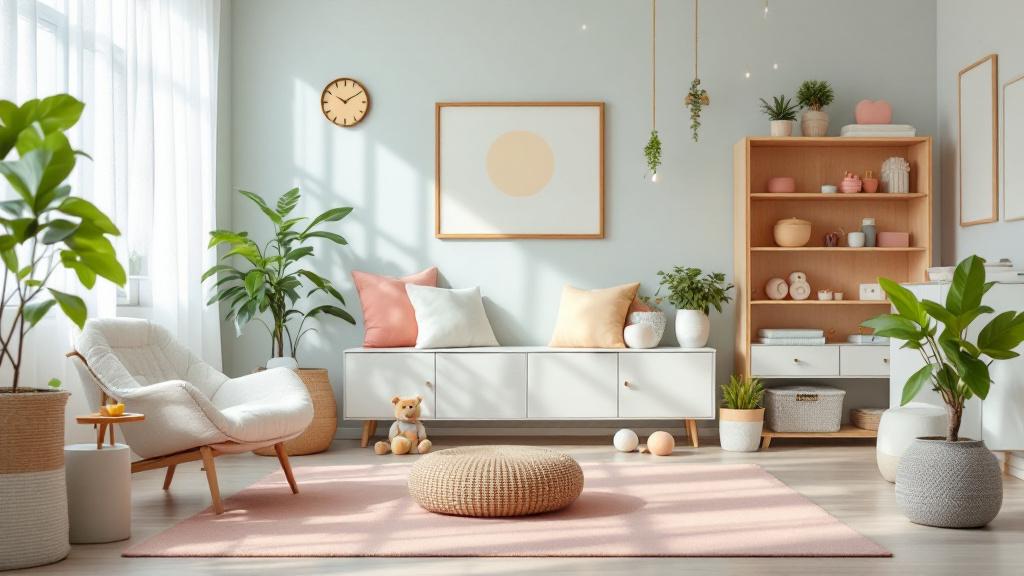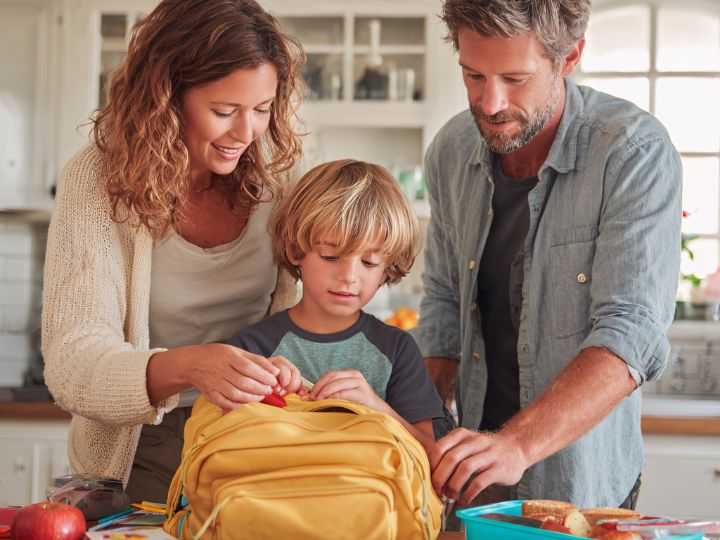Building a Supportive Atmosphere at Home
Creating a nurturing and adaptable home environment is essential for supporting children and individuals with autism. Well-designed spaces foster sensory regulation, promote independence, and reduce anxiety, allowing individuals to thrive in familiar surroundings. This guide explores effective strategies, environmental modifications, and resources to help families and caregivers craft spaces that cater to unique sensory, safety, and developmental needs.
Establishing Predictable Routines and Visual Supports
 Creating structured routines and integrating visual supports are fundamental in supporting children with autism. Visual schedules and calendars serve as effective tools to help children understand their daily activities and anticipate what is coming next, which reduces anxiety and increases independence.
Creating structured routines and integrating visual supports are fundamental in supporting children with autism. Visual schedules and calendars serve as effective tools to help children understand their daily activities and anticipate what is coming next, which reduces anxiety and increases independence.
Visual schedules typically include pictures, symbols, or words linked to specific routines or tasks, such as morning wake-up, meal times, and bedtime. These tools offer consistency and clarity, allowing children to navigate their day with a sense of control. For example, a visual calendar can outline the week’s activities, appointments, or special events, making plans more concrete.
Transition warnings, countdown timers, and visual cues play a crucial role when activities are about to change. Transition warnings give children advance notice that a task or activity is ending, helping them prepare emotionally and mentally. Countdown timers visually indicate how much time remains before the transition, which can diminish feelings of surprise or discomfort.
Using visual aids like picture cards and social stories further supports understanding and appropriate responses in various situations. Picture cards can help children communicate their needs or choices more effectively, reducing challenging behaviors. Social stories provide step-by-step explanations about social situations or routines, increasing comprehension and easing social interactions.
To illustrate, many parents and educators use a combination of visual tools to create a predictable environment. For example, a morning routine chart might include pictures for brushing teeth, getting dressed, and packing a school bag. Before a transition, a visual timer can show the child that five more minutes remain, preparing them for the change.
These strategies work best when consistently applied and personalized to meet each child's unique preferences and needs. Incorporating engaging and understandable visual supports can foster trust, reduce stress, and promote successful navigation of daily routines.
Below is a summary of common visual supports used to establish routines:
| Support Type | Description | Benefits |
|---|---|---|
| Visual Schedules | Charts with images or text outlining daily activities | Promotes predictability and independence |
| Calendars | Weekly or monthly visual plans for activities and events | Enhances planning skills |
| Transition Warnings | Visual cues alerting changes in activity | Eases transition stress |
| Countdown Timers | Visual timers showing remaining time | Prepares for upcoming changes |
| Picture Cards | Images representing needs, choices, or steps | Facilitates communication |
| Social Stories | Narratives explaining social scenarios | Improves understanding of social rules |
Implementing these visual supports can greatly assist children with autism in feeling more secure and capable as they navigate their environment.
Designing Safe, Comforting, and Independent Living Spaces

How can environmental adjustments promote safety, comfort, and independence for autistic individuals?
Creating a home environment that is both safe and sensory-friendly is essential for children with autism. Thoughtful environmental changes help reduce stress and prevent sensory overload, fostering a space where children feel secure and in control.
Implementing visual supports like schedules, picture labels, and social stories can make routines predictable and manageable. These tools aid in understanding daily activities and transitions, reducing anxiety and encouraging independence.
Calming zones equipped with sensory toys, weighted blankets, or soft furnishings provide safe retreat areas for children to self-regulate when overwhelmed. Using calming colors, soft lighting, and minimizing clutter can help create a soothing atmosphere.
Safety features such as securing furniture, removing hazards, and installing childproof locks are important in preventing accidents. Additionally, accessible design elements like ramps, lower switches, and grab bars support mobility and independence.
Environmental adjustments that address sensory needs—like soundproofing, using soft textiles, and controlling lighting—further promote comfort. These changes not only reduce adverse reactions but also improve overall well-being.
Supporting self-care with accessible tools, offering choices, and encouraging the development of coping skills empower children to build confidence in their abilities. Collaborating with professionals such as occupational therapists can help in tailoring environments to each child's unique needs.
Altogether, these modifications create a predictable, safe, and nurturing space that promotes emotional health, safety, and independent living for children with autism.
What features should be included in a home environment to support an autistic child’s development and well-being?
A home designed to support an autistic child's growth and happiness should incorporate several key features. Sensory-friendly spaces play a vital role, including calming lighting—such as dimmable or natural light—and soft flooring options like carpet or foam mats.
Designated calming zones filled with sensory toys, weighted blankets, and comfort items provide children with a safe place to relax and decompress. Visual supports like daily schedules, choice boards, and social stories help in building communication skills and understanding routines.
Safety modifications are crucial. Secure furniture, safety gates, outlet covers, and hazard removal ensure a secure environment. These measures protect children and provide peace of mind for caregivers.
Reducing environmental stimuli can make a big difference. Keeping spaces uncluttered, controlling noise with soundproofing or white noise machines, and minimizing visual distractions help children focus and manage their emotions.
Incorporating consistent routines, offering regular movement and sensory breaks, and facilitating positive social interactions encourage healthy development and independence. Use of accessible tools and gentle guidance supports learning new skills and fosters confidence.
By combining these elements—sensory considerations, safety enhancements, visual supports, and structured routines—a home can evolve into a supportive environment that nurtures each child's unique strengths, promotes their well-being, and enhances their developmental journey.
Implementing Sensory-Friendly Features and Environmental Modifications

What features should be included in a home environment to support an autistic child's development and well-being?
Creating a space that caters to an autistic child's sensory and developmental needs involves several thoughtful features. Sensory-friendly areas with calming lighting, such as soft colors and dimmable lights, help foster a relaxing atmosphere. These spaces often include soft flooring options and designated calming zones equipped with sensory toys, weighted blankets, and comfort items to reduce stress and promote self-regulation.
Visual supports are vital tools for enhancing understanding and communication. Schedules, choice boards, and social stories serve to clarify routines, ease transitions, and support language development.
Safety is a priority, so modifications like securing furniture, installing safety gates, and removing potential hazards are essential. To influence positive behavior and emotional stability, maintaining an environment with minimal distractions, reducing clutter, and lowering noise levels is beneficial.
Regular routines, movement breaks, and opportunities for positive social interactions further contribute to the child's comfort and independence, fostering a supportive environment tailored to their needs.
How does changing the environment impact autistic individuals, and how should change be managed?
Environmental modifications can significantly affect autistic individuals by alleviating sensory overload and easing transitions between activities or locations. Implementing adjustments such as dimmer lighting, quieter spaces, and sensory tools aligns the environment with their sensory sensitivities and supports overall well-being.
Preparation plays a crucial role; using visual supports, maps, or social stories to inform children about upcoming changes helps reduce uncertainty and anxiety. Establishing predictable routines and consistent cues promotes a sense of security.
Inclusive practices—for example, designated quiet areas, specific hours during which sensory-friendly modifications are active, or staff trained in autism-friendly approaches—enhance accessibility and comfort.
Any environmental change should be approached gradually and personalized to the individual's preferences. Early intervention, ongoing support, and continuous assessment ensure that modifications are effective and contribute positively to the child's development, independence, and emotional health.
| Feature | Purpose | Additional Details |
|---|---|---|
| Soft Colors & Dimmable Lighting | Reduce visual overstimulation | Use of pastel shades, adjustable lighting to suit mood |
| Sensory Tools & Toys | Promote self-regulation | Include textured objects, weighted blankets, sensory bins |
| Noise Reduction | Minimize auditory stress | Insulation, soundproofing, white noise machines |
| Visual Supports | Clarify routines & expectations | Schedules, communication boards, social stories |
| Safety & Organization | Ensure a secure space | Childproof locks, hazard removal, labeled storage |
| Calming Spaces | Enhance relaxation | Dedicated zones with soft furnishings, calming music |
Creating a sensory-friendly and well-organized environment is essential for supporting children with autism. These modifications make daily life more manageable, foster independence, and support emotional regulation, ultimately contributing to their overall development and happiness.
Supporting Family and Community Integration
What resources are available for creating autism-supportive home environments?
Developing supportive home environments for children with autism involves consulting a variety of resources tailored to individual needs. Evidence-based guides and professional consultations provide personalized advice on environmental adjustments. Organizations specializing in autism-friendly design offer insights into optimizing lighting, color schemes, and clutter reduction to lessen visual stimuli. Addressing auditory sensitivities might include soundproofing, soft furnishings, and noise-canceling devices.
Incorporating sensory tools such as weighted blankets, swings, or climbing zones can help meet touch, vestibular, and proprioceptive needs. Visual supports like schedules, labels, and calming spaces assist children in understanding routines and reducing stress.
Structural modifications—such as installing soundproof doors, using appropriate lighting, and organizing storage—boost safety, independence, and a calming atmosphere. These measures, guided by expert advice and supported by community resources, create a sensory-friendly environment conducive to learning and relaxation.
| Resource Type | Description | Example Resources |
|---|---|---|
| Professional Consultations | Experts help tailor home design | Occupational therapists, home modification specialists |
| Educational Materials | Guides on autism-specific adjustments | Books, online courses, autism support websites |
| Organizations | Support with sensory-friendly modifications | Autism Speaks, local autism support groups |
| Sensory Tools | Practical items for sensory regulation | Weighted blankets, sensory bins, calming lights |
Addressing sensory needs through personalized modifications fosters a safe and engaging space for children to thrive.
Creating a Holistic Autism-Friendly Home Environment
Designing a supportive home environment for individuals with autism requires a thoughtful balance of sensory considerations, safety features, visual supports, and flexible spaces. Incorporating personalized sensory tools, calming zones, and safety measures enhances comfort and independence. Collaborating with professionals ensures tailored modifications that adapt to the individual's evolving needs. By fostering open communication, family education, and community engagement, families can create nurturing environments that promote development, reduce stress, and enable autistic individuals to thrive both at home and in the broader community. The journey to an autism-friendly home is ongoing, but with informed strategies and compassionate planning, families can transform their living spaces into empowering and inclusive environments.
References
- Adapting your environment | Autism Speaks
- Best Ways to Create a Autism-Friendly Environment for a Child
- Creating an Autism-Friendly Home Environment
- Creating a Sensory-Friendly Home Environment for Children with ...
- Creating a 'Perfect Environment' at Home - Autism Parenting Magazine
- 7 Ways to Create an Autism-Friendly Home for Your Child
- Creating a Sensory-Friendly Home Environment for Children with ...
- Creating a Home Environment For Your Child with Autism to Thrive
- Creating an Autism-Friendly Home Environment











